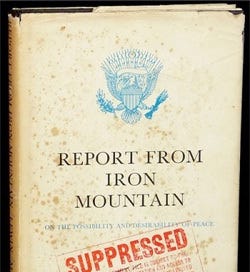

Discover more from Frederick R. Smith Speaks
Festering Federal Courts
Checks and balances, or the separation of powers, is the foundation of our Representative Constitutional Republic.
Checks and balances, or the separation of powers, is the foundation of our Representative Constitutional Republic. Your author respectfully repeats — Representative Constitutional Republic (not a democracy). Unfortunately, not one of the three branches of the government (Executive, Judicial, nor Legislative) is working under the Constitutional framework. It is sad and irritating that most of our leaders do not seem to understand these critical precepts.
Under the Constitution, only the legislative branch (Congress) can write laws. The Federal Court’s job is to hear cases that fall under the purview of the Federal Constitution. Congress controls the lower federal courts by deciding the boundaries between the “circuits” while the Supreme Court is the highest or final arbitrator. The federal courts are a constitutional interpretative body and should be consistent, particularly the Supreme Court. 1 For example, if a court hears a case and decides an outcome, any future case of the same nature should be thrown out based on an earlier decision. Unfortunately, the debased elite have decided that the federal courts must be proactive, for they believe that the Constitution is a “living breathing” document. A clay-like instrument to knead and conform to their worldview.
Can the federal courts make a bad decision? Certainly, and it’s the job of the legislature to counteract the federal courts by a variety of means such as:
Approving the appointment of judges that uphold the Constitution,
Exercising power to impeach and remove judges,
Controlling appropriations to federal courts,
Curbing judicial power by adding new judges and creating new court systems,
Writing rules that may limit powers of judicial review in certain legislation, or
Making pending bills that exclude funding to enforce a decision of the Court
Throughout the history of our Nation, the Supreme Court has made some questionable decisions, with the Dread Scott case being an early example. 2 However, as time marches on, bad decisions outside the solid precepts of the Constitution are increasingly common. A more egregious example is the Roe vs. Wade decision, which is a state’s issue — nothing in the Constitution remotely covers this topic. In this 1971 case, two Supreme Court Justices voted in favor of abortion, Potter Stewart and Harry Blackmun. Both had spouses that worked at Planned Parenthood but refused to recuse themselves from the case.
As much as this author detests abortion, it should not be federalized. Why? Because federalized issues nourish the leviathan. As this largess gets bigger, it becomes less and less manageable at best, more prone to corruption at worst. Despite these truths, Congress will rarely exercise its prerogatives to counter the courts.
In recent years, the federal courts have ruled on many issues such as “gay rights” and the Ten Commandments. These decisions are not only outside the plain language of the Constitution but at odds with most of the people in the Nation. That is legislating from the bench (judicial activism), and many federal judges see nothing wrong with performing their duties in this manner.
The main culprits are those judges who are social activists, as they “honestly” believe that their notion of justice is more important than the letter of the law they are sworn to protect. As true as this may be, these usurpers will never admit to being outside the framework of the Constitution. Therefore, we find ourselves governed by unelected people—the federal judges. Unlike elected officials that we can vote out of office, federal judges get an appointment for life. It is only through impeachment that they can face removal.
One of the more repugnant “fiat laws” emanating from the Supreme Court was the 2003 decision that decreed the Texas law prohibiting sodomy from being “unconstitutional.” This decision was based on the 14th Amendment that somehow makes privacy a right. Nowhere in the Constitution, including the 14th Amendment, does it mention privacy as a right. However, the 4th and 5th amendments were crafted to ensure security. 3 4 Further, the Constitution does indeed codify that any issue outside the Federal purview shall be a state prerogative.
While one can argue if state laws about sexual matters are necessary, there is an overlooked element of this ruling. By simply declaring that Texas cannot say sodomy to be unconstitutional, this Supreme Court ruling has the effect of making every deviant sexual behavior a “right.” While making sodomy a perceived right is bad enough, this decision is dangerous, as we no longer have the checks and balances between the states. Under the Constitution, the State of Texas and all other states have (had?) the right to decide how to regulate social matters like sex-based on local standards.
June 26, 2015, was the clarion call for sexual rights in the United States. On this date, the Supreme Court decided the Obergefell v. Hodges case. By one vote, the Court ruled that same-sex marriage is a right.
Another irritating case back in 2003 was the federal court judge in San Diego who ordered the city to evict the Boy Scouts from a camp. The Scouts have used and run the city park since the 1950s. A gay “couple,” with help from the crummy American Civil Liberties Union, sued the city claiming the Scouts’ presence was a violation of the “separation of church and state.” The judge who heard the case ruled that the Scouts are religious because they mention God in their recited oath. That s is ridiculous because the land in question was at one time privately owned and donated to the city for the express purpose of setting up a Scout camp.
Your author has harped on this subject repeatedly but despite what a wall of separation worshiper believes and says, the Founders did not intend that there be a “separation of church and state.” No such words are remotely mentioned in the Constitution. 5 Never in their wildest dreams did they believe that a secular public life was necessary for America. They wanted to prevent Congress from setting up a state religion, such as in England.
It is unbelievable to even conceive of the notion that the Founding Fathers would even consider the Boy Scouts to be a religious body simply because they believe in God. The intellectual elite wall worshipers who can indeed talk the blood out of a rock. They will not succeed with this author.
The debased political leftists have their hook. In place of what they cannot do at the ballot box or in the legislature, they advance their putrid social agenda by fiat laws emanating from the federal judiciary. This ideology has even burrowed itself into the Senate, which is in tune with this agenda. It is here that senators will not even allow the appointment of judges who believe in the true Constitution.
In the new Covid-1984 “work new normal” of today, it is time for the commie debased elite to ramp up the march to one-party rule. In April 2021, House and Senate Democrats drafted legislation to pack the Supreme Court, currently with nine, with four new justices. This move would radically change the balance of power on the Nation’s highest Court. House Judiciary Committee Chair Jerry Nadler, Subcommittee chair Hank Johnson, and first-year Rep. Mondaire Jones proposed the bill. In the Senate, Ed Markey of Massachusetts championed this bill.
Based on the above packing play, there is one concern your author has concerning the Constitution. It is the process of seating Supreme Court judges. Also of concern is the power vested in the President that allows him (or her, or other) to recommend judges. A constitutional scholar (cough, cough) like Bill Clinton (wink, wink) will claim the “balance” occurs in the confirmation process in the Senate. We know how that goes these days. While it may be entertaining to think about the possibility of electing federal judges, we know this is non-sequitur given the “wonderful” state of our election system.
Cogent Author and Publisher, Frederick R. Smith
Cogent Editor, Sean Tinney
The courts have two central systems: the federal courts, United States courts, and the state courts. The Constitution sets up federal judicial power not entrusted to the states (many were jealous of the forces needed for a robust national government). Following these provisions, Congress passed the Judiciary Act of 1789, organizing the United States Supreme Court and setting up federal courts of inferior authority. The states are free to set up their judicial systems subject to the federal courts’ exclusive jurisdiction and Article VI of the Constitution (judges of state courts to be bound by the Constitution). The courts set up under the powers granted by the U.S. Constitution are known as constitutional courts. They are the district courts, the courts of appeals (before 1948, circuit courts of appeals), and the Supreme Court. The Supreme Court is the highest appellate tribunal in the country and is a court of original authority in some cases. The Supreme Court is also the final judicial arbiter of federal constitutional questions by its power of review. Members of the federal judiciary—which includes the Supreme Court, 13 U.S. Courts of Appeals, and 94 federal judicial district courts—are nominated by the President and confirmed by the Senate. Federal judges hold their seats until they resign, die, or are removed from office through impeachment by Congress. Other federal courts are the legislative courts. These are the Claims Court, the Court of International Trade, the Tax Court, and the territorial courts set up in the federally administered territories of the United States.
American slave who sued for his liberty after spending four years with his master in a territory where slavery had been banned by the Missouri Compromise. The resulting decision by the U.S. Supreme Court (1857) declared the Missouri Compromise unconstitutional because a slave could not be taken from a master without due process of law.
Fourth Amendment — “The right of the people to be secure in their persons, houses, papers, and effects, against unreasonable searches and seizures, shall not be violated, and no Warrants shall issue, but upon probable cause, supported by Oath or affirmation, and particularly describing the place to be searched, and the persons or things to be seized.”
Fifth Amendment — “No person shall be held to answer for a capital, or otherwise infamous crime, unless on a presentment or indictment of a grand jury, except in cases arising in the land or naval forces, or in the militia, when in actual service in time of war or public danger; nor shall any person be subject for the same offense to be twice put in jeopardy of life or limb; nor shall be compelled in any criminal case to be a witness against himself, nor be deprived of life, liberty, or property, without due process of law; nor shall private property be taken for public use, without just compensation.”
In an 1802 letter to the Danbury Baptist Association in Connecticut, then-president Thomas Jefferson highlighted the “wall of separation” metaphor previously utilized by Roger Williams, who had referred to the “wall of separation between the garden of the Church and the wilderness of the world.”
Subscribe to Frederick R. Smith Speaks
The Frederick R. Smith blog is the ramblings of an uncommon man in a post-modern world. As a master of few topics, your author desires to give readers a sense of the thoughts of a senior citizen who lived most of his life before the new normal.











